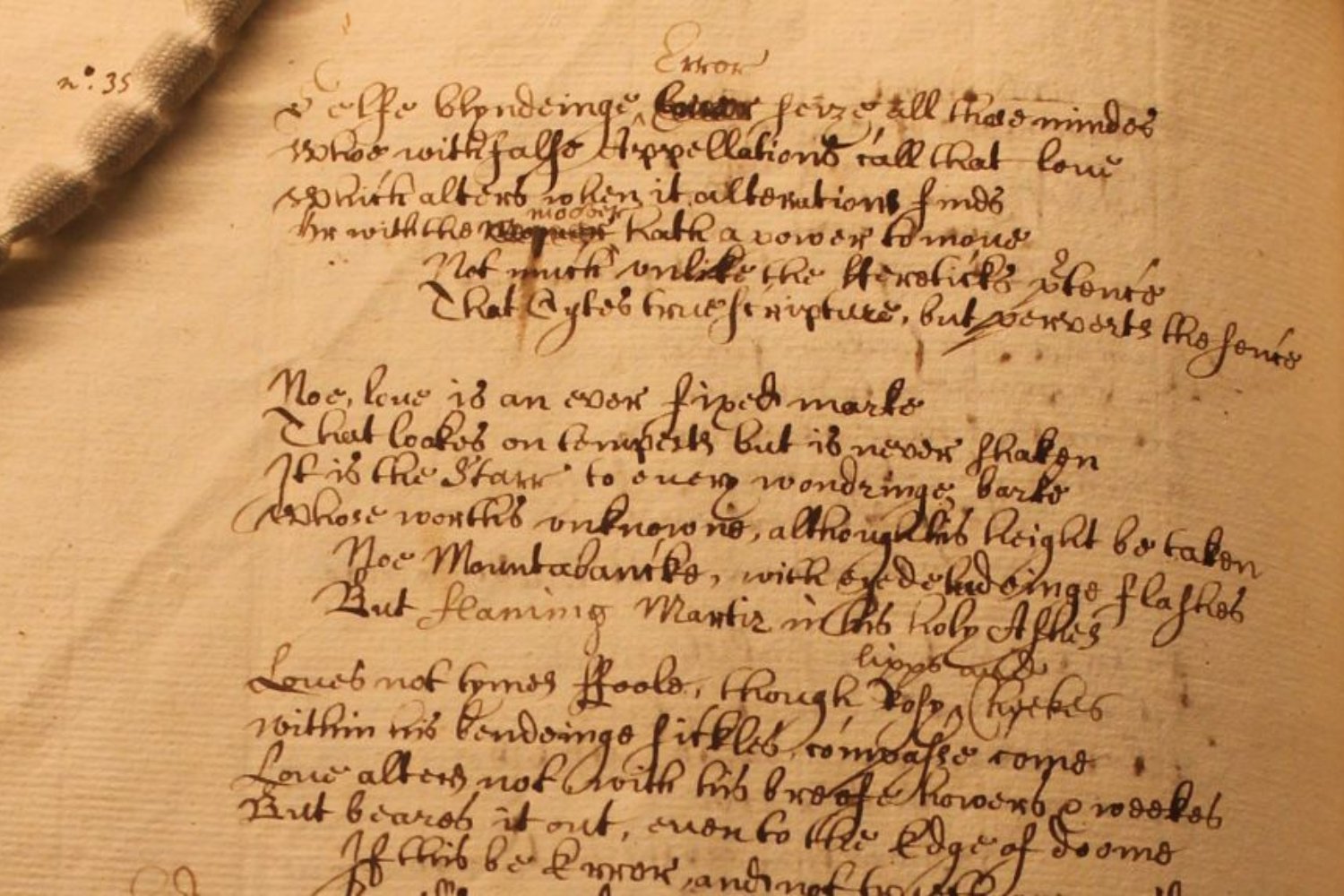
Lost Shakespeare Sonnet Rediscovered in Oxford Library Sheds Light on 17th-Century England
A remarkable discovery at Oxford University’s Bodleian Library has sent ripples of excitement through the world of Shakespearean scholarship. Leah Veronese, an English professor at Oxford, unearthed a rare and previously undocumented copy of one of William Shakespeare’s most celebrated sonnets, Sonnet 116, within a 17th-century collection of texts. This finding promises to offer new insights into the reception and adaptation of Shakespeare’s work during a tumultuous period in English history.
Veronese stumbled upon the sonnet while meticulously examining a manuscript of miscellaneous writings compiled by Elias Ashmole (1617–1692), a prominent figure of his time. Ashmole was not only the founder of Oxford’s Ashmolean Museum of Art and Archaeology but also a staunch Royalist during the English Civil Wars. The manuscript, a repository of diverse materials, held the key to this significant literary find.
The unearthed sonnet is not a mere transcription of Shakespeare’s original. Instead, it is a handwritten copy of a musical adaptation crafted by the 17th-century English songwriter Henry Lawes. What makes this discovery particularly intriguing is that it is only the second known handwritten copy of Sonnet 116 to ever surface, making it a truly exceptional find for scholars.
Veronese, in a statement released by the university, recounted her initial encounter with the poem. "As I was leafing through the manuscript, the poem struck me as an odd version of Sonnet 116," she explained. Upon consulting the manuscript’s catalog, she found that the poem was described as being "on constancy in love" but made no mention of Shakespeare’s authorship.
The absence of Shakespeare’s name in the catalog, coupled with the altered nature of the poem, may explain why this version of Sonnet 116 remained unnoticed for so long. William Henry Black, who cataloged Ashmole’s manuscript in the 19th century, might not have recognized the poem’s connection to Shakespeare beyond its opening lines. Veronese suggests that Black may not have read far enough into the poem to recognize its connection to the Bard, or that he simply did not read it.
Indeed, the recently discovered version of the sonnet diverges significantly from Shakespeare’s original. It begins with an additional line: "Self blinding error seize all those minds." In contrast, Shakespeare’s Sonnet 116 famously opens with the lines: "Let me not to the marriage of true minds Admit impediments; love is not love Which alters when it alteration finds."
Veronese believes that the combination of the added opening line and the lack of attribution to Shakespeare in the original catalogue description contributed to the poem’s obscurity. The different start could have discouraged any casual reader from recognizing it as Shakespear’s work.
The discovery has been lauded by other Shakespearean scholars. Emma Smith, a professor of Shakespeare studies at the University of Oxford, who was not involved in the study said "This exciting discovery shows that centuries of searching for evidence about Shakespeare and his early reception hasn’t exhausted the archives." She also noted that while "Let me not to the marriage of true minds" is now one of Shakespeare’s most famous sonnets, it does not seem to have been very popular during Shakespeare’s own time.
In addition to its altered opening, Lawes’ adaptation of Sonnet 116 also features a different ending and extra lines, which the study suggests were likely added to lengthen the song. However, Veronese argues that the adaptation may have also been driven by political motivations, a fascinating prospect given the historical context.
The period in which Lawes created his musical adaptation of Sonnet 116, England was embroiled in a series of civil wars. From 1642 to 1651, King Charles I and Parliament clashed in a bitter struggle for power. The conflict resulted in the execution of Charles I in 1649 and the establishment of a Republican regime that lasted for 11 years before the monarchy was restored.
These turbulent years were marked by widespread loss of life and the enactment of peculiar legislation that outlawed customs such as celebrating Christmas and performing songs in public. Ashmole’s collection, which includes Royalist poetry and banned Christmas carols alongside the song version of Sonnet 116, reflects the chaos and political ferment of the era.
Veronese contends that in the context of Ashmole’s collection, Lawes’ setting of Sonnet 116 takes on a new meaning. She interprets it as a "political love-song in praise of Royalist political constancy during political turmoil." This reading suggests that the adaptation of Shakespeare’s sonnet was not merely a musical endeavor but also a subtle expression of political allegiance during a time of great division.
Veronese’s research, detailed in a study published in The Review of English Studies, highlights the interplay between literature, music, and politics in 17th-century England. The discovery of this rare adaptation of Sonnet 116 offers scholars a valuable opportunity to reassess Shakespeare’s reception and influence during a pivotal moment in English history. It also serves as a reminder that even after centuries of searching, new discoveries continue to illuminate our understanding of Shakespeare and his era.
